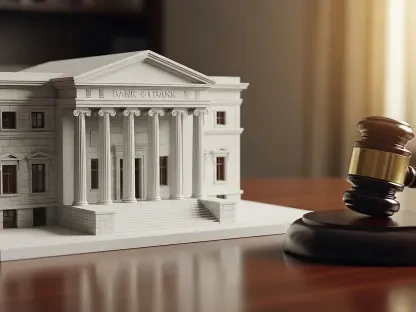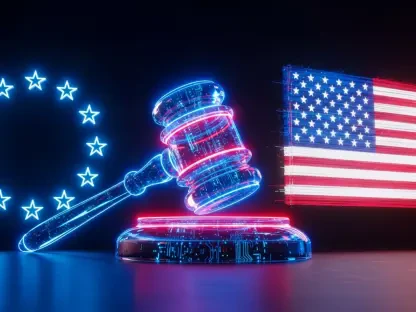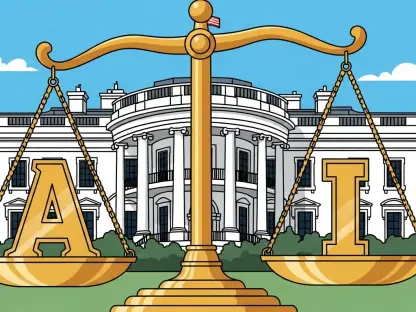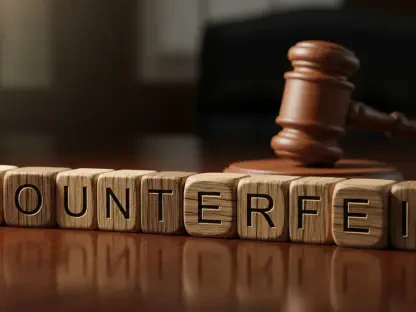The Supreme Court recently delivered a landmark decision in the case of Dewberry Group, Inc. v. Dewberry Engineers Inc., significantly impacting the calculation of damages for trademark infringement under the Lanham Act. The central issue revolved around whether the profits from a defendant’s affiliated companies could be included in the damages calculation for trademark infringement. The ruling established a clear standard, specifying that only the profits of the named defendant could be included, thus affiliation alone is insufficient for incorporating additional profits into the damages assessment.
Implications for Trademark Infringement Cases
Limiting Financial Liability
This recent decision by the Supreme Court is poised to have significant ramifications for future trademark infringement cases by restricting potential financial liability to the direct earnings of the named defendants. By setting this precedent, businesses facing trademark disputes can expect more predictable and narrowly defined outcomes. The court’s ruling emphasizes the necessity for direct involvement of entities in infringing activities, rather than broadening the scope to include related companies without specific evidence of direct infringement.
The implication of this ruling extends far beyond the particular case at hand. It provides a critical precedent that will guide future litigation strategies and decisions in trademark infringement cases. Businesses, legal practitioners, and policymakers are likely to re-evaluate their approaches in light of these clarified standards. This decision underscores the importance of thoroughly documenting direct involvement in any alleged infringement and may influence how evidence is gathered and presented in future cases. The precision offered by this ruling is aimed at fostering a fairer and more rigorous judicial process in determining damages for trademark infringement.
Precise Legal Standards
The Supreme Court’s decision marks a move toward more precise and restricted interpretations of liability and damages in trademark infringement cases. This trend is expected to influence how these cases are litigated and resolved moving forward. The clarified standards serve as a guide for both plaintiffs and defendants, ensuring that financial liability is accurately assessed based on direct involvement. The ruling discourages attempts to inflate damages by extending liability to affiliated companies without clear evidence of their participation in infringing activities.
For companies operating in industries where trademarks play a crucial role, this decision has profound implications. Legal compliance and meticulous governance become even more critical as businesses navigate the complexities of intellectual property rights. This ruling may prompt organizations to adopt more robust trademark protection strategies and enhance their efforts to prevent infringement. It also highlights the value of expert legal advice in crafting policies that align with the clarified standards set by the highest court, ensuring companies are prepared for any potential litigation.
Key Legal Developments
Graco Inc. Lawsuit Against Devco Corporation
In addition to the Supreme Court’s decision, the legal industry has witnessed several notable lawsuits that further illustrate the ongoing challenges related to intellectual property and corporate compliance. One significant lawsuit involves Graco Inc. and Graco Minnesota filing against Devco Corporation. Accusing Devco of selling counterfeit products, this case is being overseen by U.S. District Judge Zahid N. Quraishi. The case highlights the persistent issue of counterfeit goods in the market and the legal measures companies must take to protect their trademarks and brand integrity.
The lawsuit serves as a reminder of the importance of vigilance in monitoring and enforcing intellectual property rights. Companies must remain proactive in detecting and addressing counterfeit activities to safeguard their market presence and consumer trust. The legal proceedings in this case may also impact how similar future cases are handled, potentially setting new precedents in the fight against counterfeit products. Legal practitioners and businesses alike should stay abreast of the developments in this lawsuit, as it underscores the dynamic nature of trademark enforcement.
Securities Litigation
Other significant legal cases include a securities lawsuit filed by Goldeneye Advisors against Hanaco Venture Capital and its executives. This case represents a growing trend in securities litigation where investors seek redress for alleged misconduct and breaches of fiduciary duty. Additionally, a securities class action involving Toronto-Dominion Bank is being handled by prominent legal firms. These cases reflect the complex landscape of securities law and the heightened scrutiny companies face regarding their financial practices and governance.
The securities lawsuit against Hanaco Venture Capital exemplifies the legal intricacies involved in holding executives and companies accountable for their actions. Investors and legal professionals must navigate a web of regulatory requirements and legal precedents to successfully pursue claims. Similarly, the class action involving Toronto-Dominion Bank sheds light on the collective efforts of shareholders in seeking justice and compensation for alleged wrongdoings. These cases underscore the importance of transparent and ethical corporate behavior and the role of the legal system in enforcing these standards.
Navigating Legal Challenges
Expert Opinions and Corporate Strategies
The ongoing legal challenges in areas such as intellectual property, compliance, and corporate governance require careful navigation. Expert opinions highlight the significance of the Supreme Court’s decision in guiding future litigation and corporate strategies. Companies must now consider the implications of these legal precedents in their operations, ensuring their strategies align with the clarified standards set by the highest court. This involves not only adhering to rigorous compliance practices but also proactively adopting measures to prevent potential disputes and infringements.
The overarching trend toward more precise legal standards necessitates a thorough evaluation of existing policies and practices. Businesses should seek expert legal advice to understand the nuances of the ruling and its impact on their operations. By implementing robust compliance mechanisms, companies can mitigate the risk of litigation and ensure that they are well-prepared to address any legal challenges that may arise. This proactive approach is essential for maintaining the integrity of their trademarks and protecting their financial interests.
Future Litigation Trends
The Supreme Court recently rendered a pivotal decision in the case of Dewberry Group, Inc. v. Dewberry Engineers Inc., profoundly affecting how damages for trademark infringement are calculated under the Lanham Act. The primary issue in the case was whether the profits from a defendant’s affiliated companies could be considered when calculating damages for trademark infringement. The court’s ruling established a precise standard: Only the profits of the defendant actually named in the case could be included in the damages calculation. This means that profits from affiliated companies cannot be considered unless those companies are also named defendants. The decision clarifies that mere affiliation is not enough to justify including additional profits in the damages assessment. This landmark ruling will likely have significant implications for future trademark infringement cases, providing clearer guidelines on how courts should approach the inclusion of profits in damages evaluations.









